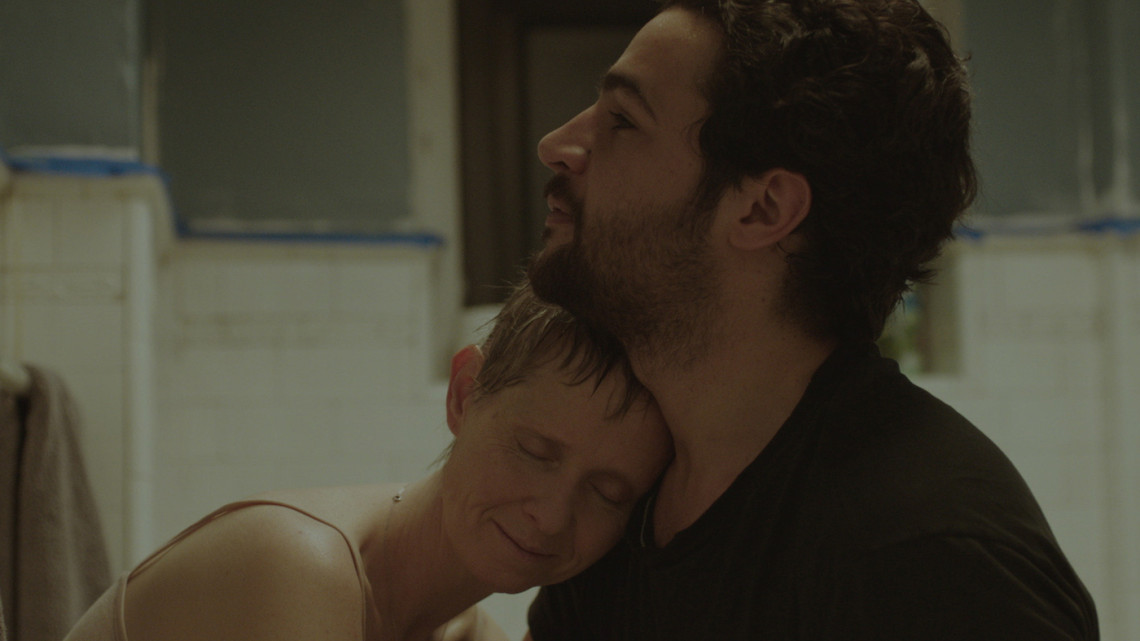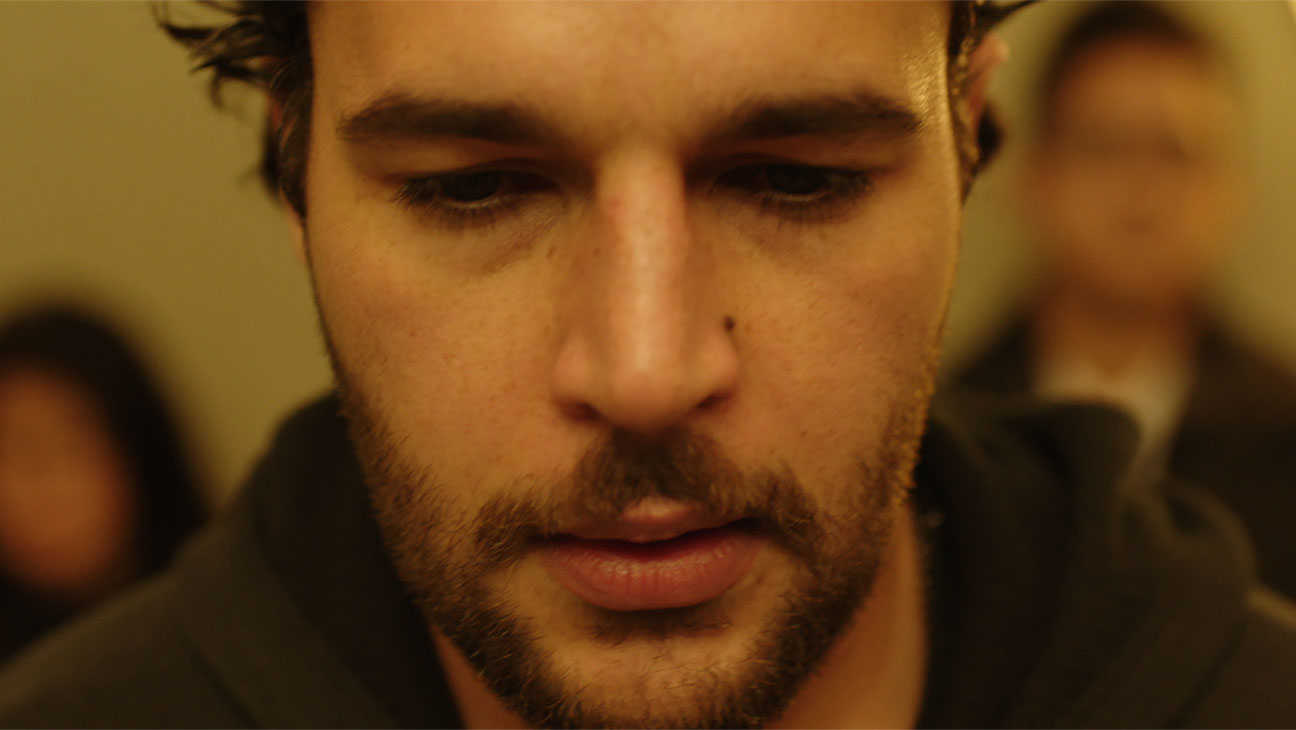Often, when interviewing talent around the release of a film, you can count on them having settled into a rhythm of call-and-response after fielding questions from the media all day. Not so Josh Mond, writer/director of the new film James White, who told Movie Mezzanine he had just finished watching the Kurt Cobain documentary Soaked in Bleach before our phone call.
How he manages to find time to watch anything is remarkable given his whirlwind year. James White began its journey on the festival circuit back in Sundance in January and is only now getting a theatrical release. In the meantime, he has kept plenty busy with his production company Borderline Films, a collective with fellow New York University grads Antonio Campos and Sean Durkin, in which the three rotate roles of writing, directing and producing.
Collaboration also helped Mond forge the story and style of his deeply personal directorial debut, which closely squares its camera on the turmoil within Christopher Abbott’s eponymous character as his mother (Cynthia Nixon) succumbs to her terminal illness. This particular development process involved, practically from conception, not just Abbott but also Hungarian cinematographer Mátyás Erdély. Movie Mezzanine discussed with Mond how the three of them worked together to forge a cross-culturally resonant tale of grief from his personal experience losing a loved one.
MOVIE MEZZANINE
It seems like Mátyás Erdély, the director of photography on James White, came in and started forming the film at the script stage. I could be wrong about this, but it seems like he was helping out beyond just how the story was told and actually influencing what would be told.
JOSH MOND
Mátyás was a pure collaborator on this—and also a teacher. Even starting from the beginning when we just talked for the first time on Skype, he did the call outside because it was nighttime [in Hungary] and it was day in New York. I couldn’t see his face, and we had an hour-and-a-half conversation where I thought he did it consciously so I wouldn’t have anything to reflect off of. As it turns out, that wasn’t calculated…
Through that conversation, we thoroughly got along, and he explained what he was attracted to in terms of the intent. He had just worked with my partner [Sean Durkin, for whom Erdély shot the TV miniseries Southcliffe], and it was really great that he was vocal about what he didn’t like. It gave us something to work towards and improve, and he was conscious of it.
Then he came two months before shooting, and we got to know each other. He challenged me about what the film was about. He made me answer questions. We went through photobooks that I really loved and just talked a great deal—we got really close.
We then started to really go through the script scene by scene, where I had to defend everything or justify it. If it didn’t work, we would make it work. And we also found the language together.
And also, he got to know Chris [Abbott, the film’s lead actor]. They connected right away, and it was really important they connected the way that they did or the movie wouldn’t have worked.
MOVIE MEZZANINE
Were you shooting much coverage, or was it determined at this point that you would be shooting the film heavily in close-ups primarily of Chris Abbott’s face?
JOSH MOND
A couple of things: [Chris and I] had done a precursor to James White, an experimental short [1009], where a lot of it was really close. But in the script, there were only…one or two sequences at most where it was above the eyebrow or below the lip. It wasn’t really until talking with Mátyás that we committed to this language.
Him being from Hungary and me being from New York and really getting out the anxieties out at this crossroads, this situation, it was through everything that we were able to commit to this idea. It was important to make it feel like we were either with him or we were him.
MOVIE MEZZANINE
Have you gotten a chance to see Son of Saul [the other 2015 release shot by Mátyás Erdély] yet?
JOSH MOND
No, I haven’t! This is my month to catch up on everything. I’m watching Steve Jobs tomorrow.
MOVIE MEZZANINE
Was Mátyás developing Son of Saul during or immediately after James White?
JOSH MOND
I think it shot afterwards, but the director [László Nemes] had been working on that for a very long time. They had been working on it together.
MOVIE MEZZANINE
I’m sure you’ve heard this from a number of people now, but it seems like he applied a lot of what worked so well in James White—the intensely subjective, tightly framed close-ups shot in shallow depth-of-field—and applied them on a grander scale in Son of Saul.
JOSH MOND
I don’t know, I haven’t seen of Son of Saul. I know the director himself has been exploring similar ideas through his other work and planning that movie. My understanding is that he’s been planning that movie for a really long time.
MOVIE MEZZANINE
Like five years just to get the script.
JOSH MOND
Yeah, and I can’t wait to see it. They’re very different movies, obviously, and Mátyás is connected to both of them.
MOVIE MEZZANINE
Have you seen Sicario yet? I know you’ve mentioned Denis Villeneuve as a favorite director of yours.
JOSH MOND
Absolutely. I fucking loved it. I saw it with my costume designer, and we both looked at each other afterwards and were super-inspired. But we were also like, “Why even do it anymore?” He’s done it. Visually, it is so simple. So elegant. So entertaining.
MOVIE MEZZANINE
And that’s another movie this year that makes effective, heavy use of close-ups. Is the emotionally organic, unironic use of the shot making a comeback?
JOSH MOND
I don’t think it went away. My partner Antonio [Campos] has done it in Afterschool, Sean explored it in Southcliffe and Martha [Marcy May Marlene, his 2011 feature debut]. Obviously, Cassavetes. Biutiful, [Alejandro G.] Iñárritu. If you’re talking about the power of the close-up, look at Michael Haneke. Even look at Gaspar Noé, I Stand Alone. Yeah, it’s making a comeback, and it’s going to be hard for me to step away from. We’ve got such good actors, and it’s not all said.


















